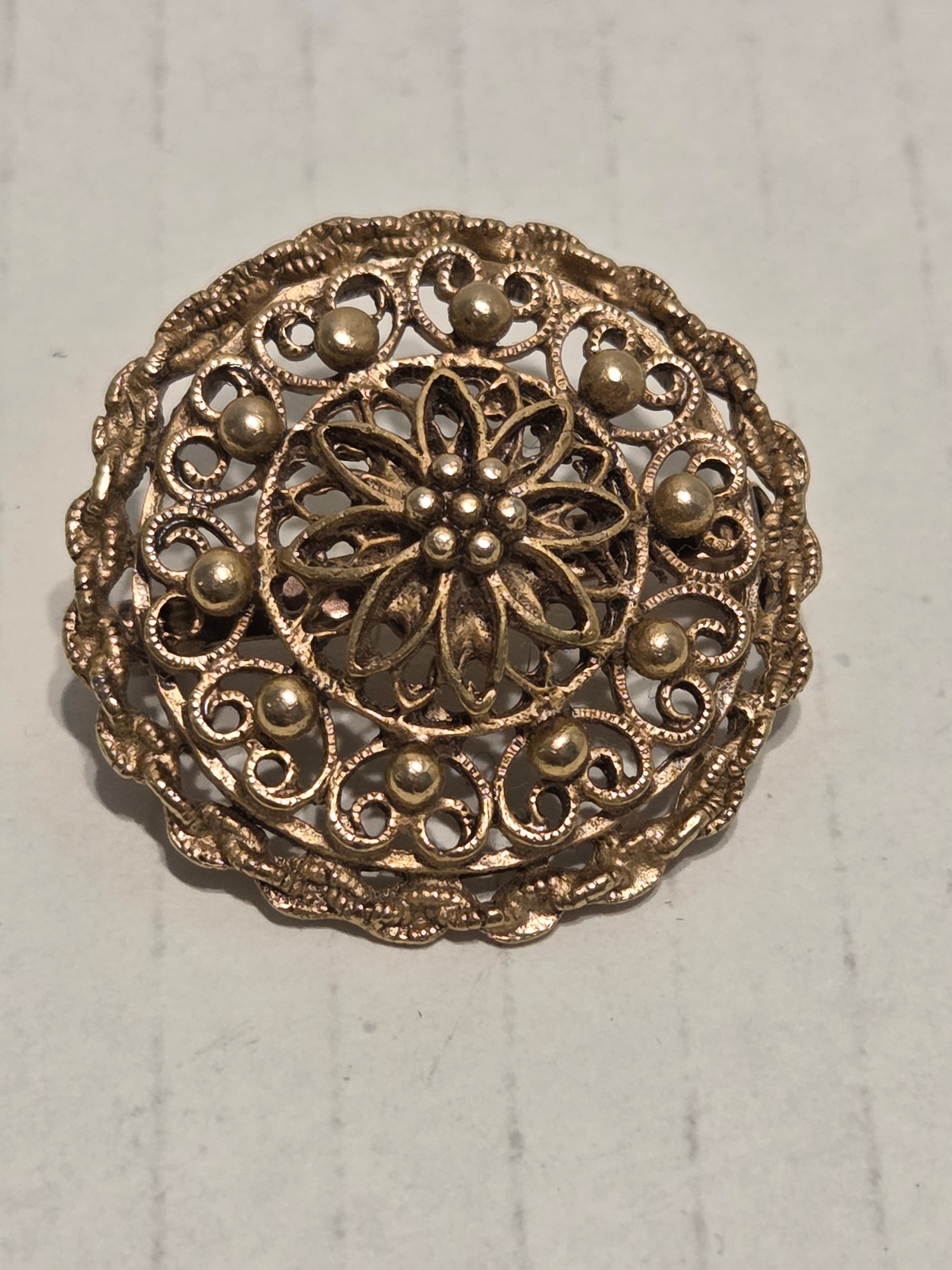
Period: Victorian Era (circa 1860s - 1890s)
This brooch is a wonderful example of jewelry from the mid-to-late 19th century. Several key features confirm this dating.
Key Identifying Features:
The 'C' Clasp: The most definitive clue is the simple C-shaped catch for the pin on the back. This type of clasp was the standard before the invention of the modern rollover safety clasp around 1910.
Extended Pin: The pin stem is long and extends slightly past the edge of the brooch. This was a common feature in Victorian brooches, designed to securely fasten the piece to the thicker, heavier fabrics worn during that period.
Style and Construction: The design features intricate, delicate wirework known as filigree, with a layered floral motif in the center. This ornate and detailed craftsmanship is highly characteristic of Victorian aesthetics.
Description
Materials: This brooch is most likely made of gilt brass or a similar gold-washed base metal. These materials were widely used during the Victorian era to create the look of solid gold at a more accessible price point.
Design: It is a round, multi-layered brooch with a scalloped edge, a base of fine filigree swirls, a circle of raised beads, and a central, three-dimensional flower. The craftsmanship is excellent and showcases the Victorian love for intricate detail.
Estimated Value
This is a true antique, and its value is based on its age, craftsmanship, and condition rather than a brand name.
For an unsigned Victorian filigree brooch of this type and in good condition, the estimated resale value is in the $60 to $110 CAD range.
Factors that influence this value include:
Condition: For a piece that is likely over 120 years old, it appears to be in very good condition from the photos. The patina (the natural darkening of the metal over time) is expected and often desired by collectors. Any breaks in the delicate filigree would lower the value.
Material: If it were to be tested and found to be solid gold (which is unlikely without any hallmarks), the value would increase substantially based on the gold content.
Artistry: The quality and complexity of the filigree work are excellent, which places it at the higher end of the
a genuine piece of 19th-century history. It's a lovely example of the detailed and romantic style of the Victorian era.
